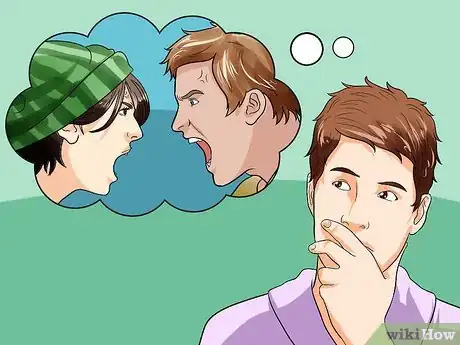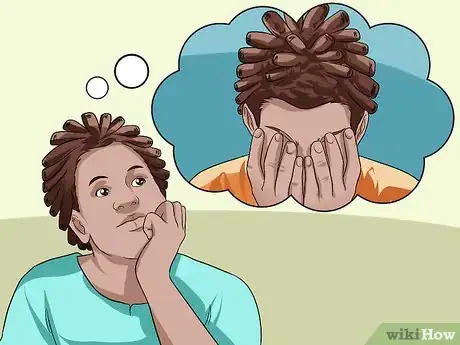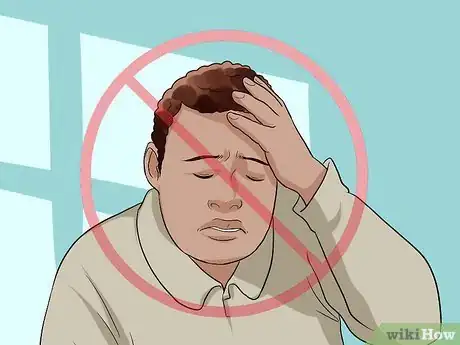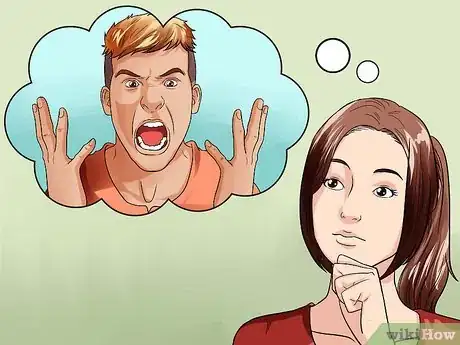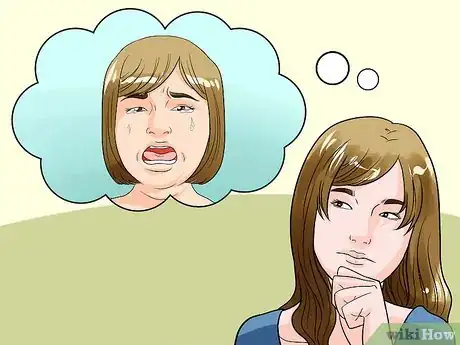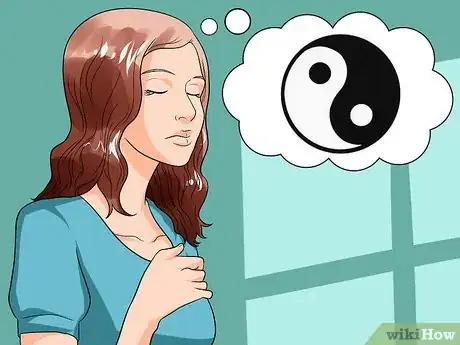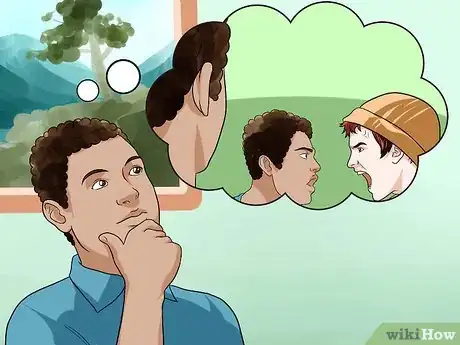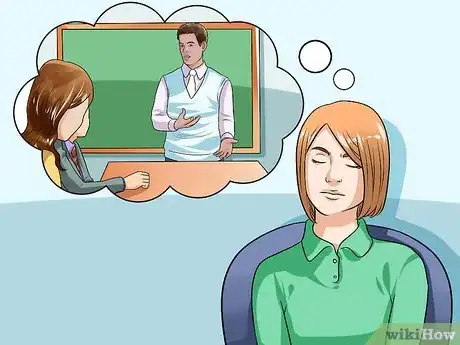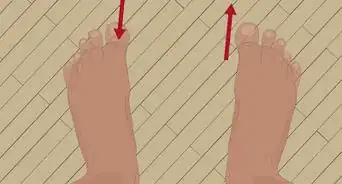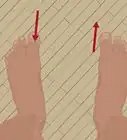This article was co-authored by Sarah Schewitz, PsyD. Sarah Schewitz, Psy.D. is a licensed clinical psychologist by the California Board of Psychology with over 10 years of experience. She received her Psy.D. from the Florida Institute of Technology in 2011. She is the founder of Couples Learn, an online psychology practice helping couples and individuals improve and change their patterns in love and relationships.
This article has been viewed 56,583 times.
Emotional Clearing is the practice of bringing awareness to our mental and emotional compulsions and reactions in order to "heal" them or integrate them. The end state of doing this work is Wholeness which is actually a step beyond enlightenment. That said, the efficacy Emotional Clearing has not been tested rigorously; proceed with caution if deciding to try this therapy.
Steps
Dealing with Triggers
-
1Identify your triggers. To engage in Emotional Clearing requires you to know what emotional experience or episode it is that you are trying to clear. A trigger is anything that elicits a negative emotional response.
- Reflect on things that have aroused negative emotion in you lately. Was it a fight with a loved one? Being stuck in traffic? These are examples of triggers.
- Try to keep in mind triggers that you may not think of normally. For example, maybe it is really hot outside and that is actually making you angry, or maybe you stubbed your toe and the pain made you angry but you attributed it to something else, like your partner.
-
2Embrace your body's negative sensations. Stop resisting negative feelings in your body and instead bring awareness to all aspects of your body and allow it to inform you about how you think and feel about things out in the world and in your mind.[1]
- To embrace your body's negative sensations, do not try to avoid or distract yourself from feeling negative. Instead accept that you will at times feel negative emotions by realizing they are normal and think about how they make your body feel.
Advertisement -
3
-
4Stop resisting your emotions. Instead, bring awareness to them and allow them. We avoid actually feeling our emotions by projecting them and repressing them. This must stop to actually clear them.[4]
-
5Embrace negative thoughts. Instead of trying to shut out your negative thoughts, observe them and question them.
- As you are observing and questioning your thoughts and feelings, take responsibility for them by telling yourself that they are your own and yours alone. [5]
- Question your emotions by asking why you think you are experiencing them, ask yourself whether you are sure the cause is what you think it is. For example, maybe you are angry because of something your partner said to you, or maybe it is really hot outside and you are annoyed, or maybe some combination of both.
-
6Follow your sensations to their roots. As you embrace the sensations, feelings, and thoughts and beliefs that you have, follow them to their origins in your childhood.
- Think about how you the way you think and feel might have been caused by early experiences in your childhood. This will create a state in which the original formative traumatic or overwhelming incident will naturally begin to "heal" or resolve.
-
7Witness your sensations at their roots. Allow all of this to soften and flow in, around and out of your body space, while holding your early childhood self in a nurturing embrace.
- Look through the ancient Third Eye technique by contacting the ying and yang healing energies of the universe.[6]
Engaging in Emotional Clearing
-
1Release your emotion. Once you have identified your trigger and embraced it, it is time to release it. Express your feelings in a way that does not hurt others. Scream into a pillow if you are upset, for example, or go for a jog to cool off, letting your emotions out.
- It is important to release emotions both verbally and physically to move energy out of the physical and emotional body.
- Letting emotions about verbally involves talking about what made you upset. Letting your emotions out physically involves expressing your feelings through your body, for example, by clenching your fists really hard for a few seconds when angry.
-
2Step back and observe. Watch the situation as if you are not a part of it. Imagine yourself hovering above the triggering event. Try to honestly consider the scenario by freeing yourself from bias. By being an outside observer you are more likely to be successful at this.
-
3Engage your trigger. If your trigger is another person, for example, if your partner made you angry, talk openly with him about it. Share honestly in your feelings with that person and ask that he do the same with you.
-
4Find the mirror. Look for yourself in the other person as you are communicating your emotions to him. This will allow you to empathize with the other person and will also help you to be honest with yourself.
- Imagine that the other person is literally an emotional mirror that reflects back what you are feeling, but through the light of his true self.
-
5Clear the mirror. Take responsibility for yourself and free the other person who triggered your anger from blame. You can take responsibility for your actions by thinking carefully about your role in your negative feelings coming about. Maybe you said something that led him to retaliate with harsh words of his own; rather than just thinking about what he said, think about how you contributed to the argument.</ref>
- When you take responsibility for your actions, also free the other person.Think about him as a teacher who has shared with you a lesson about emotion and how sometimes people trigger negative emotions in us.
-
6Apologize for pain you caused. If you caused the other person pain in your interactions with him, take responsibility for it and apologize to him.
- Make your apology sincere by reflecting on how your actions could have caused him emotional pain and how you would not like to have that happen to you. In this way you can feel his pain.
- Here is an example for how to offer a sincere apology: "I'm truly sorry for the pain I caused you; I realize after reflecting on it that I am partly to blame for our argument getting out of hand. I hope that you can forgive me and that we can put this behind us."
Warnings
- If you have been diagnosed with a mental health disorder, always first consult with your doctor or counselor before engaging in a new therapy technique.⧼thumbs_response⧽
- Be careful of approaches to mental health that are associated with practices, such as astrology, that lack empirical support.⧼thumbs_response⧽
References
- ↑ http://www.emclear.com/index.html
- ↑ Sarah Schewitz, PsyD. Licensed Psychologist. Expert Interview. 15 April 2019.
- ↑ http://www.emclear.com/index.html
- ↑ http://www.emclear.com/index.html
- ↑ http://www.emclear.com/index.html
- ↑ http://www.emclear.com/index.html
- ↑ http://www.emclear.com/Emotions/Emotions_astrology.html
- ↑ http://undsci.berkeley.edu/article/astrology_checklist
